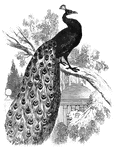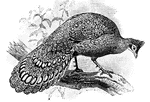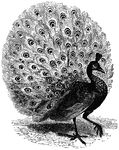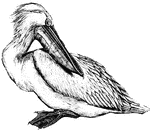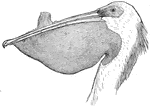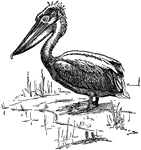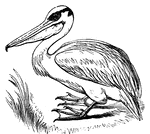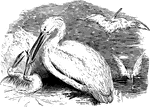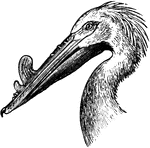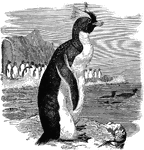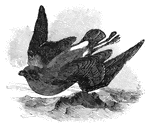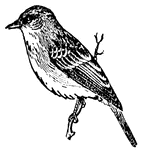228 illustrations of birds including: parakeet, parrot, partridge, passenger pigeon, pastor, pavao, peacock, pelican, penguin, petrel, pewee, phalarope, pheasant, philydor, phoebe, piculet, pie, pigeon, pinc-pinc, pintail, pipit, pitta, plant-cutter, plover, pochard, pogostemon, pork, pouter, promerops, psalurus, ptarmigan, puff, and puffin
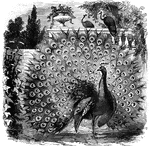
Peacock
The males of the peacock species are known for their magnificent plumage. For this reason they have…
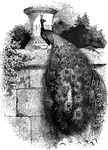
Peacock
The males of the peacock species are known for their magnificent plumage. For this reason they have…
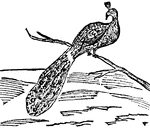
Peacock
The male of a gallinaceous fowl, about the size of the turkey. The rump feathers are long and capable…

Peacock
A class of beautiful birds of the pheasant family, native to southeastern Asia. In the wild state peacocks…

Peacock
"The family of Pavonidae comprehends the Peacock." The male bird forms the beautiful array of tail feathers…
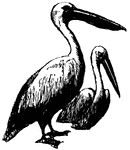
Pelican
Pelican, a water bird with webbed feet and a long bill having a pouch on the under surface. The upper…

Pelican
A genus of webfooted water birds remarkable for their broad bill with a pouch under it. The bill is…

Brown Pelican and Sea Gull
An illustration of a brown pelican with a fish in it's mouth and a sea gull resting on his back. The…
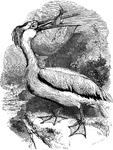
Common White Pelican
The common white pelican measures about five to six feet in length, with a wingspan of approximately…

Crested Pelican
"The Crested Pelican or (Pelecanus crispus) is white with rosy or salmon tinge, the primaries being…
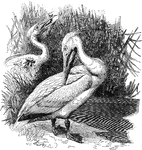
Crested Pelican (Pelicanus Onocrotalus)
"The Crested Pelican inhabits the southeast of Europe and Africa."

White Pelican
The White Pelican, Pelecanus onocrotalus also known as the Eastern White Pelican or Great White Pelican…
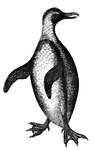
Penguin
Penguins are adopted for a completely aquatic life. The body is boat-shaped, the neck long, and legs…

Penguin
"The Penguins are aquatic birds confined to the high S. latitudes or both hemispheres, where they congregate…
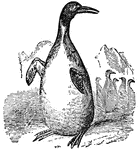
Penguin
A genus of webfooted birds native to the southern hemisphere. They have short wings useless in flight,…
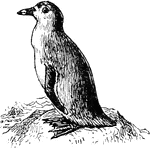
Penguin
Penguins vary much in size, the King Penguin of the Antarctic Seas being the largest. They all have…

Jackass Penguin
The jackass penguin gets its name from its strange cry, which is said to resemble the braying of a donkey.

King Penguin
Also known as the pantagonian penguin, the king penguin is found in the far southern latitudes of South…

Little Penguin
"The Little Penguin, adapted exclusively for swimming and diving. In this quaint bird the wing forms…

A Troop of Crested "Maccaroni" or Rock-Hopper Penguins Nesting Under the Shade of Tussock of Trees
This is a troop of crested "Maccaroni" or Rock-hopper penguins nesting "under the shade of tussocks…
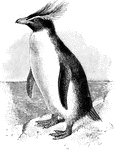
Southern Rockhopper Penguin
The Southern Rockhopper Penguin (Eudyptes chrysocome) is a bird in the Spheniscidae family of penguins.
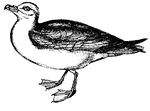
Petrel
Petrels never dive, and rarely swim. Instead they skim rapidly over the waves looking for food.

Petrel
Petrels resemble gulls, except in having the nostrils open as two parallel tubes on the top of the beak.

Petrel
Petrels have a fossil record that extends back at least 60 million years, it is among the oldest bird…
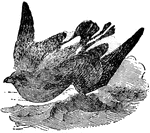
Petrel
A genus of sea-birds. They include many species, all of which have webbed feet and long and strong wings.…

Black Petrel
"Cymochorea melaena. Black Petrel. Form of the last very nearly; bill more robust; tarsus a little longer…
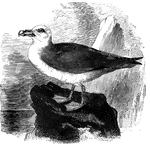
Fulmar Petrel
Distributed throughout the northern regions of the Atlantic, the fulmar petrel prefers to nest in the…
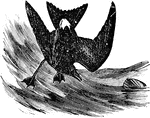
Leach's Petrel
"Cymochorea leucorrhoa. Leach's Petrel. White-rumped Petrel. Coloration as in the last species (pygmy…

Storm Petrel Swimming with Reflection
The storm Petrel "of the Mediterranean and North Atlantic from Greenland to South Africa, which breeds…

Stormy Petrel
The smallest of the web-footed birds, the stormy petrel averages only about six inches in length.
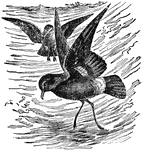
Stormy Petrel
"Petrel is a popular name for certain small oceanic birds of dusky plumage, nocturnal in habit, widely…
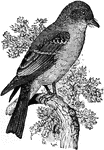
Wood Pewee
"Contopus virens. Wood Pewee. Olivaceous-brown, rather darker on head; with sides washed with a paler…
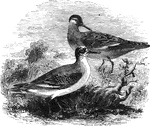
Gray Phalarope
Preferring aquatic environment, the females of the gray phalarope species are slightly larger than the…

Wilson's Phalarope
"Steganopus wilsoni. Wilson's Phalarope. Bill and feet black. Crown of head pale ash, passing into white…

Pheasant
The pheasant prefers wooded slopes or marshy plains. They eat grain, berries, worms and insects.
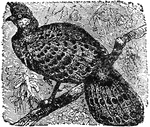
Pheasant
"The Pheasant is one of the most highly prized game birds. The adult male pheasant is a beautiful bird,…

Pheasant
A genus of birds found originally in Asia, but brought to Europe at an early date in history. They were…
